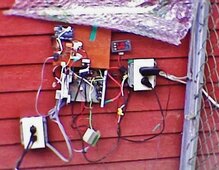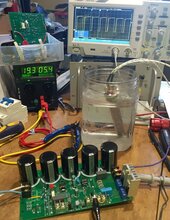Thinking about this more, this solution is overly complex. You don't need an inductor.
View attachment 203015
PV panels feed input cap. MOSFET (or IGBT) connects input cap to water heater. PWM the MOSFET to get the desired voltage on the cap.
That's all you have to do. The inductor is there to provide steady power to the load, but the load doesn't need it.
I'd put a free wheel diode on the MOSFET output just to catch wiring inductance.
The software would monitor the voltage and duty cycle to optimize the panel power delivery. A current sensor would add to the capability if desired.
This would be very efficient, no inductor losses. Since the DC is chopped, the AC thermostat would work.
Depending on size of the capacitor, this can run at slow rates, say 20 Hz. You want to avoid 30 Hz to 20 KHz since that makes audible noise.
(Parts nominated above are notional, not checked)
Edit: I see efficientPV had the same idea...
Mike C.







